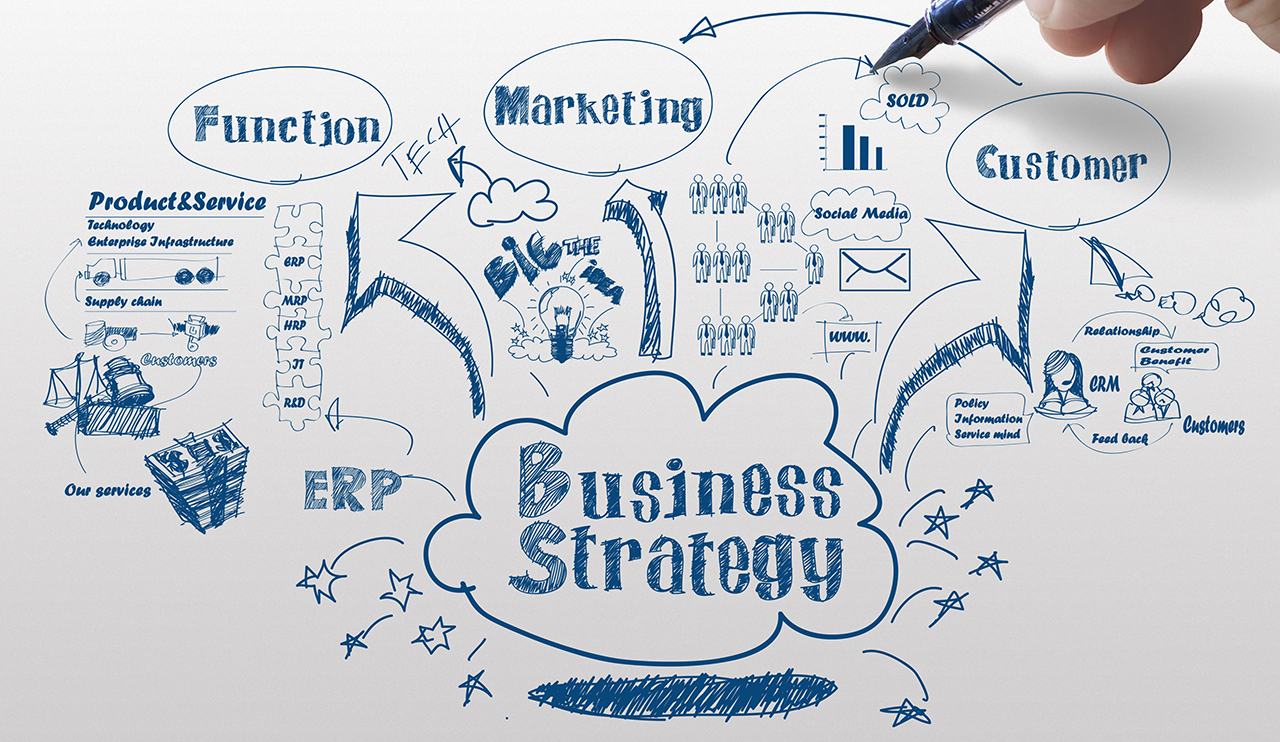-
Strategy Formulation
-
Strategy Evaluation
-
Strategy Implementation
1. Performing a situation analysis, self-evaluation and competitor analysis:
- internal and external;
- micro-environmental and macro-environmental.
2. Concurrent with this assessment, objectives are set for both short-term and long-term. This involves crafting:
- Vision statements (long term view of a possible future);
- Mission statements (the role that the organization gives itself in society);
- Overall corporate objectives (financial and strategic);
- Strategic business unit objectives (financial and strategic);
- Tactical objectives.
3. Objectives should suggest a strategic plan. The plan provides the details of how to achieve these objectives.
This three-step strategy formulation process is sometimes referred to as determining where you are now, where you want to go, and how to get there.
These three questions form the essence of strategic planning.
Measuring the effectiveness of the organizational strategy.
It is extremely important to conduct a SWOT analysis to evaluate the strengths, weaknesses, opportunities and threats (internal and external) of the entity in question. The evaluation result may highlight necessary precautionary measures or even to change the entire strategy.
The evaluation process shall address the following key points:
Suitability deals with the overall rationale of the strategy. The key point to consider is whether the strategy would address the key strategic issues underlined by the organization’s strategic position.
- Does it make economic sense?
- Would the organization obtain economies of scale, scope growth or experience gain?
- Would it be a suitable fit with the current environment and capabilities?
Tools that can be used to evaluate suitability include:
- Ranking strategic options
- Decision trees
- What-if analysis
Feasibility relates to the availability of resources required to implement the strategy. Resources include funding, people, time and information.
Tools that can be used to evaluate feasibility include analysis of:
- cash flow and forecasting
- break-even
- resource deployment
Acceptability relates to the expectations of the identified stakeholders (mainly shareholders, employees and customers) with the expected performance outcomes, return, risk and stakeholder reactions.
- Return deals with the benefits expected by the stakeholders (financial and non-financial). For example, shareholders – increase of their wealth, employees – improvement in career prospect and customers – better value for money.
- Risk deals with the probability and consequences of failure of a strategy (financial and non-financial).
- Stakeholder reactions deals with anticipating the likely reaction of stakeholders. Shareholders could oppose the issuing of new shares, employees and unions could oppose outsourcing for job security, customers could have concerns over a merger with regards to quality and support.
Tools that can be used to evaluate acceptability include:
- what-if analysis
- stakeholder mapping
- Allocation and management of sufficient resources (financial, personnel, time, technology support)
- Establishing a chain of command or matrix structure (cross functional teams)
- Assigning responsibility of tasks or processes to specific individuals or function groups
- It also involves managing the process. This includes monitoring results, benchmarking against best practices, evaluating the efficacy and efficiency of the process, controlling for variances, and making adjustments to the process as necessary.
- When implementing specific programs, this involves acquiring the requisite resources, process development, training, testing, documentation, and integration with (and/or conversion from) legacy processes.

